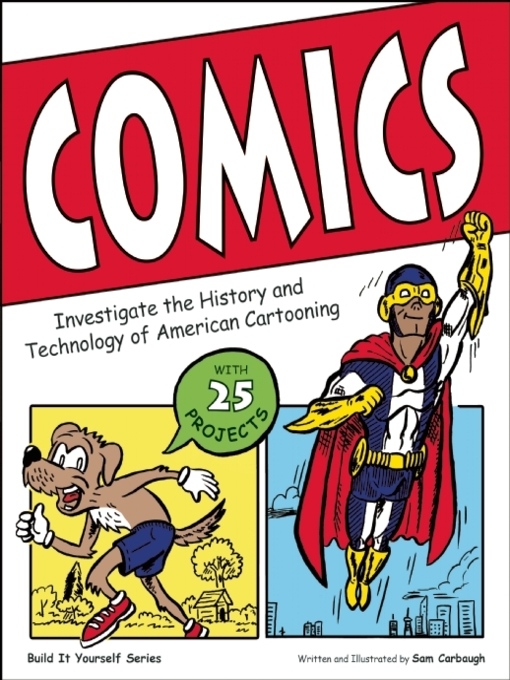Comics have a rich and varied history, beginning on the walls of caves and evolving to the sophisticated medium found on websites today. For a kid, comics can be more than entertainment. Comics can be a lifeline to another world, one in which everyone has the potential to become a superhero and children are welcome to all the power adults have overlooked.
Comics: Investigate the History and Technology of American Cartooning follows the trajectory of comics from their early incarnations to their current form. Kids learn how to sketch comic faces and bodies, invent a superhero, draw manga characters, and create their own graphic novel or webcomic. Short biographies of famous cartoonists provide inspiration and introduce specific comic styles. Comics introduces the technology available to budding young cartoonists, while they channel their creative powers and develop their storytelling skills.
Part history, part instruction, pure fun, Comics entertains and informs young readers while challenging them to join the cartooning conversation.
This title meets Common Core State Standards for literacy in language art, and social studies; Guided Reading Levels and Lexile measurements indicate grade level and text complexity.
- New eBook additions
- New Kid's eBooks
- New teen additions
- Most popular
- Try something different
- See all ebooks collections
- New audiobook additions
- New Kid's audiobooks
- New teen additions
- Most popular
- Try something different
- See all audiobooks collections
- Most popular
- Newly Added Magazines
- News & Politics
- Women's Lifestyle
- Men's Lifestyle
- Sports
- Crafts & Hobbies
- Fashion
- Home & Garden
- See all magazines collections

